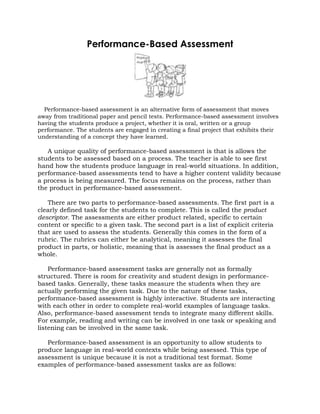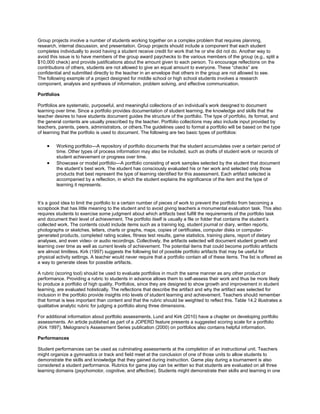Performance-based assessment involves having students complete projects, performances, or tasks to demonstrate their understanding of concepts rather than taking traditional paper and pencil tests. There are two key parts to performance-based assessments - a clearly defined task for students to complete and a rubric listing the explicit criteria used to assess students. Some common examples of performance-based assessments include oral reports, original stories, puppet shows, portfolios, and performances. These assessments allow students to apply their knowledge in real-world contexts and demonstrate a process rather than just a product.





